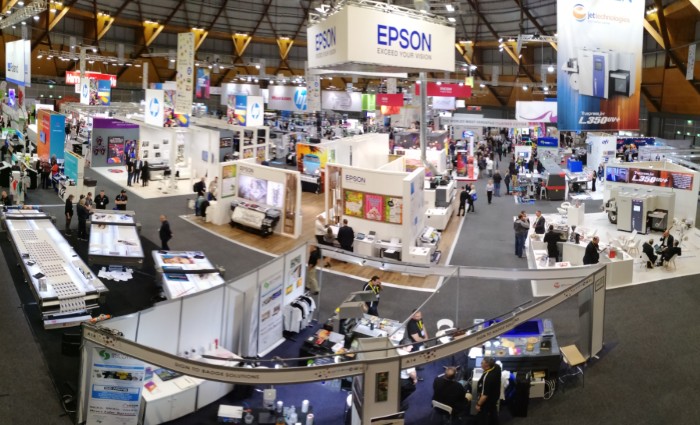Trade shows have become like Hollywood sequels: you are only as good as your last iteration.
Every show is distinctive, even if it bears the same name as the one before it which, in the case of PrintEx, was four years ago.
The concept of PrintEx began with its first staging in 1999. Its purpose was to provide Sydney with an event, without competing with Melbourne’s PacPrint and thus stands were limited to a maximum of 90 square metres and all shell-scheme, i.e. no custom Taj Mahal structures. Its foundations actually went back to the Insoprint ‘small offset’ trade shows, that badly needed a revamp after the arrival of digital in the A3 colour market.
PrintEx ‘99 was a huge success and popular with exhibitors due to the capped stand-build costs and Sydney Convention & Exhibition Centre venue, Darling Harbour, which attracted more visitors from New Zealand as well. The following 2003 show was even more popular, so much so that PrintEx 2007 allowed larger stands up to 180 square metres and by 2011, custom build stands were allowed. PrintEx 2011 was the last one to be held at Darling Harbour due to redevelopment, so PrintEx 2015 moved to Sydney Olympic Park, Homebush, where it remained for the 2019 event.
Keeping up with the changes
Along the way, Darling Harbour re-opened but the new exhibition centre was deemed unsuitable for industrial shows such as PrintEx and GAMAA (the Graphic Arts Merchants’ Association) merged with VISA, a sign industry body, to create Visual Connections. The newly merged owners of the show, along with its partner the PIAA, found that the pace of digital change took its toll on traditional offset and flexo suppliers and these exhibitors gradually dropped off the floorplans. PrintEx 2015 and 19 were also held in tandem with the Visual Impact/Image Expo trade show, with 2019 adding Labels & Packaging in for good measure.
What we are left with was on vibrant display at Homebush between August 13 and 16. No offset apart from prepress, CtP and workflow software plus postpress and finishing that has cross-over into digital anyway. PrintEx is not alone in experiencing this decline in traditional technology participants. Other shows have shrunk or even ceased completely, such as the UK’s Ipex.
In reality, the original concern over PrintEx competing with PacPrint has come into fruition. There is little to discern between the two shows apart from location. When the Melbourne Exhibition Centre (”Jeff’s Shed”) opened in 1996, PakPrint (it had a ‘k’ then for packaging and the Packaging Council of Australia was a one-third partner); it occupied the entire 30,000 square metres of available space. PacPrint 2017 was less than half of that.
Digital unifies
Digital is a unifying factor and brings together processes that were formerly disparate.
At PrintEx, you could see digital solutions for cut sheet up to B2; continuous feed, both narrow web (labels) and wider web (DM, commercial and transactional); plus a huge array of wide format devices in roll and flatbed formats that included textile decoration; ‘Printwear’ and promotional products.
Workflows and business systems enabled easy pathways to web-to-print and e-commerce and automation offered more efficient use of labour and capital. This is the brave new world we live in, and trade events need to reflect the latest trends.
PrintEx succeeded in this regard – the measure of successful trade shows today is not in how many attended or how big the floor space occupied was – it is in what value did the event deliver to industry participants, both end users and suppliers. The educational aspect should not be overlooked and PrinteX’s forums had something for everyone with some top notch speakers.
Perhaps the Labels & Packaging sector could have been bigger but it should be borne in mind that AusPack has gleaned a large slice of this market, alternates between Sydney and Melbourne and is a growing event.
That the show has become largely digital and wide format is unsurprising given the shifts in the industry over recent years and the fortunes of major press manufacturers such as Heidelberg, manroland, Komori, KBA, Ryobi, Shinohara, Goss and so forth. Australia and New Zealand are highly developed markets for print technology and digital tends to favour a higher slice of our print requirements than more densely populated countries.
Like movies, trade shows reflect community and cultural expectations. PrintEx was a dynamic, visually appealing show that demonstrated that Australia and New Zealand are creative and digitally-advanced markets experiencing a quickening rate of change. PacPrint 2021 and PrintEx 2023 will need to keep up with those changes.


